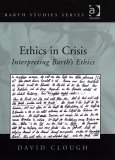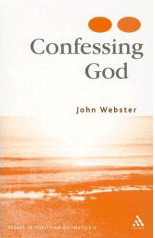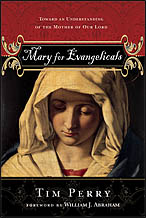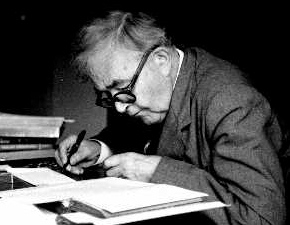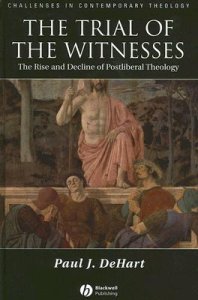Theology for beginners (21): Completion
Summary: At the End, our broken stories are lifted up and integrated into the story of Jesus’ death and resurrection, and we are thus included in the story of God’s deity.
Throughout this series, we have been speaking (or rather trying to speak) of Christian faith from the perspective of the gospel. The gospel narrates certain events as the happening of God’s own deity. A certain Jewish man is crucified outside Jerusalem and is raised to new life – this is the event of God’s deity, the event in which God identifies himself, the event in which God is God. In speaking of various main themes, therefore – God, creation, salvation and community – we have tried to take our bearings from this event, so that our talk about God is guided not by any prior conceptions of what a “divine being” should be like, but by God’s own self-definition in the story of Jesus.
In turning now to our final theme – traditionally called “eschatology” or “last things” – we are really not taking up a new topic, but are simply turning back to the same event in a new way. At this point, we are talking again of the story of Jesus’ death and resurrection as the event of God’s deity. But we are now concerned explicitly with the questions: What is the significance of this event for the ultimate destiny of our lives? What does this event lead us to expect from the future?
The story of Jesus, we have said, narrates reality. It is the context of meaning within which all other things become “true” and “real.” This is because God has eternally elected this story to be his own story, the story of his identity. And the story of God’s identity has a specific conclusion: the crucified Jesus is raised to new life. Further, as we have noted repeatedly, the story of Jesus is also a story about ourselves: in the resurrection of Jesus from the dead our own stories find their proper conclusion. We can therefore say quite comprehensively: the end of all our stories is this risen one; the future that awaits us all is this lowly God, this exalted human, this one whom the Father vindicated through the Spirit by raising to new life.
Our future is the “place” where the risen Jesus reigns as Lord in perfect fellowship with the Father through the Spirit. And so even now this future floods our lives with the light of hope and meaning. Even now, we receive our identity from this future.
At present, all our individual and collective stories are marked by fragmentation, confusion, disconnectedness. Our stories lack closure and unity. They are broken stories which lack the harmony of a fitting end. But the gospel tells us a new story – it tells us that God has raised up Jesus “for us and for our salvation.” Our own broken stories thus receive new harmony from this story. Through the power of the Spirit, our own stories are made to cohere in the story of Jesus. Where our lives were fragmented, they are now integrated. Where we were without hope and without a future, we now receive the cohesion of a fitting end from the future of the risen Jesus.
When we speak of the End, therefore, we are speaking of this narrative fittingness that integrates our stories into the story of Jesus. In the final act of a play, all the preceding acts are brought together in a coherent dramatic unity. So too, the final End that we await is the act by which God’s Spirit gathers all our individual, fragmented stories and pieces them together. The Spirit comes from the Father and integrates us into the event of Jesus’ death and resurrection – which is to say, into the event of God’s own life. By including all our little broken stories in his own story, God therefore raises us to participate in his life. Our stories become part of God’s story – yes, part of God’s identity!
Here and now in the present, the Christian community is the place where this narrative cohesion is already anticipated in advance. Here and now – in proclamation, in baptism and in Eucharist – we re-tell and re-enact the story of Jesus as the dramatic unity of the whole created world. Here and now, in acts of justice, beauty and peace, we anticipate the sheer goodness of this story’s conclusion – a cosmic goodness in which chaos, violence and injustice are finally overcome. Here and now, as we live in the freedom of the Spirit and share in each other’s lives, we experience – or rather, we are – the foretaste of the joyful freedom that this story promises. In such ways, the Christian community thus performs God’s deity as an event whose dramatic unity already integrates our lives here and now, and whose conclusion will finally be revealed as the hope and the meaning of all things.
Our existence is thus placed in a new context, transposed into a new key, and we are set free by the Spirit to participate in the unceasing harmony of God’s own thrice-repeated deity. In this divine harmony, all created things find their meaning, their place, their fittingness. And so, in the end, all creatures are brought together in this surprising and joyful dramatic unity, this story of the God who raised Jesus from the dead, this story of the God who is love.
Further reading
- Balthasar, Hans Urs von. Theo-Drama, Vol. 5 (San Francisco: Ignatius Press, 1998).
- Barth, Karl. Church Dogmatics III/2, § 47; IV/3, §73.
- Fergusson, David and Marcel Sarot, eds. The Future as God’s Gift (Edinburgh: T&T Clark, 2000).
- Hart, David Bentley. The Beauty of the Infinite (Grand Rapids: Eerdmans, 2003), pp. 395-411.
- Jenson, Robert W. God after God (Indianapolis: Bobbs-Merrill, 1969), pp. 157-79.
- Moltmann, Jürgen. The Coming of God (London: SCM, 1996).
- Pannenberg, Wolfhart. Systematic Theology, Vol. 3 (Grand Rapids: Eerdmans, 1998), pp. 527-646.
- Rahner, Karl. Theological Investigations, Vol. 2 (London: Darton, Longman & Todd, 1963), pp. 203-216.


